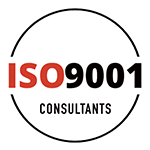Have you ever wondered how businesses ensure their products and services are of top-notch quality? One way they do this is through ISO 9001 certification. This certification helps businesses maintain high standards by providing a structured framework for quality management.
ISO 9001 is not just about having a set of rules to follow. It’s about creating an environment where quality becomes a natural part of the business culture. With ISO 9001, businesses can set clear quality objectives that everyone understands and works towards. This means everyone, from the top management to the newest employee, knows what is expected.
Another key aspect of ISO 9001 is the implementation of standardised processes. When processes are standardised, it ensures that tasks are done correctly every time. This reduces errors and variations, which leads to higher quality products and services. Standardised processes also make it easier to train new employees, as there is a clear guide to follow.
Moreover, ISO 9001 encourages continuous improvement. Businesses are always looking for ways to do things better and more efficiently. By regularly reviewing and improving processes, companies can keep up with changing customer needs and stay ahead of the competition.
Lastly, ISO 9001 places a strong emphasis on employee training and development. Well-trained employees are more competent and confident in their roles, which positively impacts the overall quality of the business outputs.
In the following sections, we will explore how setting clear quality objectives, implementing standardised processes, encouraging continuous improvement, and ensuring employee training and development through ISO 9001 can significantly enhance the quality within a business.
Setting Clear Quality Objectives
Setting clear quality objectives is the backbone of any successful quality management system. ISO 9001 helps businesses establish these goals. Quality objectives are specific targets that a company aims to achieve to ensure their products or services meet customer expectations. These objectives should be measurable and aligned with the overall business strategy.
One way to set clear quality objectives is through the SMART criteria, which stands for Specific, Measurable, Achievable, Relevant, and Time-bound. By ensuring that each objective meets these criteria, businesses can create focused goals that are easier to achieve and track.
For example, a quality objective could be to reduce the number of customer complaints by 20% within the next year. This objective is specific (reduction of complaints), measurable (20% reduction), achievable (a realistic goal), relevant (improves customer satisfaction), and time-bound (within one year).
Having clear quality objectives helps everyone in the organisation understand what is important. When all employees know the goals, they can work together more effectively to achieve them. This unity and focus result in better quality across all areas of the business.
Implementing Standardised Processes
Standardised processes are crucial for maintaining consistency and quality in any business. ISO 9001 provides a framework to help businesses establish and document these processes. Standardisation involves creating a set way of doing tasks, ensuring that every step is done correctly each time.
Standard processes reduce errors and variations, which directly impacts the quality of products and services. When tasks are performed the same way every time, it is easier to spot and fix any issues, leading to more reliable outcomes.
One of the key benefits of standardised processes is that they make training new employees much simpler. With a clear and documented process in place, new staff can quickly learn how to perform their tasks correctly. This reduces the learning curve and helps them become productive faster.
Furthermore, standardised processes help in achieving greater efficiency. When everyone follows the same procedures, there is less confusion and fewer mistakes. This saves time and resources, allowing the business to operate more smoothly.
Standardised processes also facilitate continuous improvement. By regularly reviewing and updating the processes, businesses can identify areas for improvement. This ongoing refinement helps in maintaining high standards of quality and adapting to changing needs.
In the next sections, we will explore how encouraging continuous improvement and ensuring employee training and development can further enhance the quality within a business.
Encouraging Continuous Improvement
Continuous improvement is a key principle of ISO 9001. This idea means always looking for ways to make things better. It involves regularly reviewing processes, gathering feedback, and making changes to improve quality and efficiency.
One effective method for continuous improvement is the Plan-Do-Check-Act (PDCA) cycle. This cycle helps businesses plan improvements, put them into action, check the results, and then act on what they’ve learned. By repeating this cycle, companies can make steady progress and keep improving over time.
Another way to encourage continuous improvement is by involving everyone in the organisation. When employees at all levels suggest ideas and give feedback, it creates a culture of improvement. Regular team meetings and feedback sessions can help gather valuable insights and keep everyone engaged in the process.
Continuous improvement helps businesses adapt to changing needs and stay ahead of the competition. By constantly refining processes and products, companies can ensure they are always delivering the best to their customers. This makes the business more resilient and better prepared for future challenges.
Ensuring Employee Training and Development
Employee training and development is crucial for improving quality. Well-trained employees are more confident in their roles and can perform tasks correctly and efficiently. ISO 9001 places a strong emphasis on training to ensure that staff have the skills and knowledge they need.
One way to ensure effective training is by creating detailed training programs. These programs should cover all essential tasks and processes, explaining step-by-step how to perform them. This ensures that everyone receives consistent and comprehensive training.
Regular refresher courses and updates are also important. As processes and technologies change, employees need to stay up-to-date to maintain high standards of quality. Providing ongoing training helps employees develop their skills and keep improving.
Another key aspect of employee development is recognising and rewarding achievements. When employees see that their efforts are valued, they feel more motivated and invested in their work. Recognising good performance and offering opportunities for career growth can significantly boost morale and productivity.
By focusing on employee training and development, businesses can build a knowledgeable and skilled workforce that consistently delivers high-quality products and services. This investment in people not only improves current performance but also ensures long-term success.
Final Thoughts
ISO 9001 plays a crucial role in helping businesses improve quality across all areas. By setting clear quality objectives, companies ensure everyone knows what to aim for. Implementing standardised processes helps maintain consistency and reduce errors. Encouraging continuous improvement means businesses are always looking for ways to do better. Finally, ensuring employee training and development creates a skilled and motivated workforce.
Improving quality is not a one-time effort. It requires ongoing commitment and focus. ISO 9001 provides the framework to keep pushing ahead. For businesses looking to enhance their quality, adopt a solid quality management system, and stay ahead, ISO 9001 is the way to go.
Are you ready to make quality your priority? Contact ISO 9001 Consultants today and let us help you achieve the highest standards in your business.







